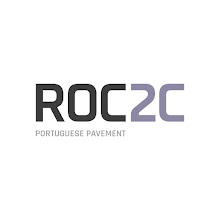
Nazaré is a town in Nazaré Municipality in Portugal with a total area of 82,4 km² and a total population of 14,904 inhabitants. It is in subregion Oeste and Leiria district.
It has become a popular tourist attraction, advertising itself as a picturesque seaside village. Located on the of the Atlantic coast, it has long sandy beaches (considered by some to be among the best beaches of Portugal), crowded with tourists in the summer. The town used to be known for its traditional costumes worn by the fishermen. Their wives worn the traditional headscarf and embroidered aprons over seven flannel skirts in different colours. These dresses can still occasionally be seen.
The town consists of three sections: A Praia (along the beach), O Sítio (an old town, on top of a cliff) and Pederneira (an old town, on a hilltop). The A Praia and O Sítio areas are linked by the Nazaré Funicular, a funicular railway.
The original settlements were in Pederneira and in O Sítio above the beach. They were the inhabitants' safe bases against raids by Algerian, French, English and Dutch pirates that lasted even till the beginning of the 19th century.
According to legend, the town derives its name from a small statue of the Virgin Mary, a Black Madonna, brought by a monk in the 4th century fromNazareth, Palestine to a monastery near the city of Mérida, Spain and brought to its current place in 711 by another monk accompanied by Roderic, the last Visigoth king. After their arrival at the seaside they decided to become hermits. The monk lived and died in a small already existing grotto, on top of a cliff above the sea. After his death and according to the monk wishes the king buried him in the grotto where he left, on an altar, the statue of the Black Madonna.
The first church in O Sítio, was built over the grotto to commemorate a miraculous intervention (1182) by the Virgin Mary in saving the life of the 12th century Portuguese knight Dom Fuas Roupinho, possibly a templar, while he was hunting deer one foggy early morning. In memory of the miracle he had a chapel (Capela da Memória) built over the small grotto, where the miraculous statue had been left (c.715) by king Roderic after the monk's death. Beside the chapel, on a protuberant rock 110 meters above the Atlantic, one can still see the mark made in the rock by one of the hands of Dom Fuas horse.
In 1377, King Fernando I of Portugal founded a new more spacious church which was totally transformed between the 16th and 19th centuries. The Church of Nossa Senhora da Nazaré is a rich baroque building, with splendid tiles on its interior. Behind and above the main altar visitors can see and venerate the miraculous image of our Lady of Nazaré.
Photos: Celso Gonçalves Roc2c

Comentários
Enviar um comentário